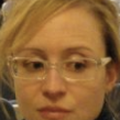Goal
Community Commons is a place to discuss topics and post documents and references relating broadly to medical humanities.
Members
-

Organizer/ Contact
-

Participant
-

Participant
-

Participant
-

Abigail Neely, PhD
Member
-

Member
-

Member
-

Member
-

Member
-

Mark Williams, PhD
Member
-

Neil Vickers, BA DEA MPhil DPhil
Member
- View all
Report on 2020 Network Annual Meeting
The CHCI Health and Medical Humanities Network met virtually on May 19th, 2020, to discuss current projects and the most pressing problems for the humanities raised by the Covid-19 pandemic.
Virtual Network Meeting: May 19, 2020
The annual CHCI Health and Medical Humanities Network meeting will take place virtually on Tuesday, May 19th. Since we hope to accommodate as many time zones among Network members as possible, the meeting will take place from 12:00-2:00 pm, Eastern Daylight Time.
CFP: Summer Institute 2020: Space, Place and Design
The objective of this CHCI Summer Institute is to investigate how space, place, and design might interplay with individualized and compassionate health care. Space, along with its less abstract and more social corollary, place, are critical terms in the formal study of literature; meanwhile, the architectural concept design has newly entered a broader disciplinary lexicon to simultaneously suggest method, process and form. We want to consider the role that space, place and design play in health care and aesthetics.
Document (pdf) uploaded by Arden Hegele to Community Commons | 12 Apr 2019
Call for Papers: New Book Series: Emerald Studies in the Humanities, Aging, and Later Life
A new book series edited by Network member Kate de Medeiros.
Document (pdf) uploaded by Arden Hegele to Community Commons | 2 Apr 2019
The Last Asylum: A Memoir of Madness in Our Times by Barbara Taylor
Free e-book for April from the University of Chicago Press. Friern Mental Hospital in London, once England’s largest psychiatric institution and formerly known as Colney Hatch Lunatic Asylum, closed its doors on April 1, 1993. In our free e-book for April, The Last Asylum: A Memoir of Madness in Our Times, historian Barbara Taylor relates her own illness and her experience as a patient at Friern, a time that coincided with a revolution in the mental health system. The Last Asylum, as memoir and history, opens a window into the twilight days of the Asylum Age. “Taylor provides a gripping (often painful) account of her own experience of madness, a fascinating description of her psychoanalysis, a historical reflection on the role asylums played for inmates and the implications of their demise, and a meditation of the interrelationships between care and cure.”—Los Angeles Review of Books Read The Last Asylum, free in April.
Document (Word) uploaded by Arden Hegele to Community Commons | 9 Mar 2019
Andrew W. Mellon Postdoctoral Fellowship: Chronic Conditions
Andrew W. Mellon Postdoctoral Fellowship: Chronic Conditions The University of Kansas invites applications for an Andrew W. Mellon Postdoctoral Fellowship in conjunction with the University’s 2019-2020 Sawyer Seminar, Chronic Conditions: Knowing, Seeing, and Healing the Body in Global Africa. The 12-month appointment will commence on July 1, 2019 and carries a $50,000 salary for the year, plus benefits. The fellow will be affiliated with the Kansas African Studies Center, the Hall Center for the Humanities, and the Spencer Museum of Art. Specifically, we seek a scholar whose work focuses on a topic that relates to health and medical humanities in African and African-descended communities. For further details, as well as information on how to apply, see: https://sjobs.brassring.com/TGnewUI/Search/home/HomeWithPreLoad?PageType=JobDetails&partnerid=25752&siteid=5541&AReq=13829BR#jobDetails=3749539_5541
Document (pdf) uploaded by Arden Hegele to Community Commons | 29 Jan 2019
History of Science Lecture: Tillmann Taape - The Striped Layman: Visual Culture and the Politics of Vernacular Medical Knowledge in Early German Print
Date: Wednesday, January 30 Time: 6:00 pm - 8:00 pm Location: Fayerweather Hall, The Center for Science and Society, Room 513, Columbia University Speaker: Tillmann Taape, Columbia University Abstract: The visual and rhetorical trope of the ‘striped layman’ began to appear in print in the Southern German lands in the late fifteenth century. Taking as its starting point the numerous woodcut illustrations in the works of the surgeon-apothecary Hieronymus Brunschwig, some of the earliest medical books printed in German, this lecture explores the striped layman as a social and intellectual in-betweener, suggesting how we can read woodcuts which appear interchangeable and merely decorative as visual arguments intervening in contemporary debates about lay education, vernacular print, and medical practice.
Document (pdf) uploaded by Arden Hegele to Community Commons | 29 Jan 2019
History of Science Lecture: Tillmann Taape - The Striped Layman: Visual Culture and the Politics of Vernacular Medical Knowledge in Early German Print
Date: Wednesday, January 30 Time: 6:00 pm - 8:00 pm Location: Fayerweather Hall, The Center for Science and Society, Room 513, Columbia University Speaker: Tillmann Taape, Columbia University Abstract: The visual and rhetorical trope of the ‘striped layman’ began to appear in print in the Southern German lands in the late fifteenth century. Taking as its starting point the numerous woodcut illustrations in the works of the surgeon-apothecary Hieronymus Brunschwig, some of the earliest medical books printed in German, this lecture explores the striped layman as a social and intellectual in-betweener, suggesting how we can read woodcuts which appear interchangeable and merely decorative as visual arguments intervening in contemporary debates about lay education, vernacular print, and medical practice.
Document (Word) uploaded by Arden Hegele to Community Commons | 15 Jan 2019
Call for Papers: Chronicity and Crisis: Time in the Medical Humanities
Call for Papers Montclair State University October 26-27, 2019
Document (pdf) uploaded by Arden Hegele to Community Commons | 8 Jan 2019
Finding the Bar Codes in Our Brains: Using Genetics to Identify the Brain's 100 Billion Neurons
February 7, 2019 | Columbia University People may take for granted their ability to touch their nose and know that they are touching their own face, and not another’s. What someone may not know is that each of the 100 billion neurons in your brain also have this ability of self-recognition. As individual nerve cells, called neurons, grow branches and connect with thousands of other neurons during brain development, their own branches distinguish between themselves and the branches of other neurons — an important adaptation that avoids entanglements. If a neuron cannot do this, it will not form a functional brain circuit — a key aspect of a healthy, functioning brain. In this lecture, Dr. Maniatis plans to discuss the role of protocadherin proteins in brain wiring, which is a complex, but fascinating story. These proteins provide individual neurons with a “barcode” that allows them to distinguish between themselves and other neurons – a complex story of gene regulation, protein structure and function and brain wiring in mice, which has ultimately led to a connection to neuropsychiatric disorders in humans, Tom Maniatis, PhD, is the Isidore S. Edelman Professor of Biochemistry; Chair, Department of Biochemistry and Molecular Biophysics; Principal Investigator at Columbia's Zuckerman Institute. Dr. Maniatis also contributes to clinical medicine by heading Columbia’s precision medicine initiative, created in 2015. This collaboration between Columbia and New York-Presbyterian Hospital aims to understand the relationships between human genetics and disease mechanisms, and to ultimately use this knowledge to personalize treatments for individual patients. Success will require a deep collaboration between early-stage research scientists, such as those at the Zuckerman Institute, and clinicians at Columbia University Medical Center.
Link added by Martina Zimmermann to Community Commons | 8 Sep 2017
The Poetics and Politics of Alzheimer's Disease Life-Writing (Palgrave, 2017)
This is the first book-length exploration of the thoughts and experiences expressed by dementia patients in book published narratives. It contrasts third-person caregiver and first-person patient accounts from different languages and a range of media, and specifically focuses on the poetical and political questions these narratives raise. Thanks to Wellcome Trust funding this book is open access and can be downloaded free from the publisher's page.
Document (pdf) uploaded by Sarah Greene to Community Commons | 6 Jun 2017
2017 Humanities in Medicine Symposium, Oct 27-29, Mayo Clinic - Deadline for submissions extended to FRIDAY, JULY 14, 2017
Interested presenters are encouraged to consider (but are not limited to) these concepts in their abstract proposal: CROSSING DISCIPLINES: STRATEGIES FOR HUMANIZING ONE ANOTHER Sponsored by the Dolores Jean Lavins Center for Humanities in Medicine In 2017, we choose to focus on how the health humanities can address differences among cultures and value systems in the healthcare workplace and beyond. We seek tools to address the concept of otherness and celebrate difference. We encourage proposals for presentations offering strategies for sustaining empathy in challenging situations—strategies that may be employed in healthcare practice, education and research. What notable examples exist in the health humanities that demonstrate cross-cultural engagement or alternative ways of thinking about difference, and model collaborative meaning-making? Who are the key practitioners who show us how to cross disciplines, blur the boundaries of otherness and listen authentically to other perspectives? How can the health humanities assist us in acknowledging bias and approaching patients and peers with openness and respect, while sustaining empathy? Please see the attached UPDATED complete call for abstracts for more information. Deadline: Abstract submissions must be emailed to [email protected] by 11:59 pm PDT on Friday July 14, 2017.
Document (pdf) uploaded by Sarah Greene to Community Commons | 6 Jun 2017
What Archie Cochrane Learnt from a Single Case, by Brian Hurwitz
Thoughts, feelings, and motives saturate clinical practice, but case reports tend to subordinate these aspects of the hurly burly of clinical experience to the goal of setting out findings, hypotheses, and knowledge claims; and the responsivity and impulsivity that Cochrane showed in 1943 are often edited out; and where they do creep in it is more likely to be wonder and surprise that become apparent in response to clinical appearances than the raw shame, desperation, and tenderness that we see here.
